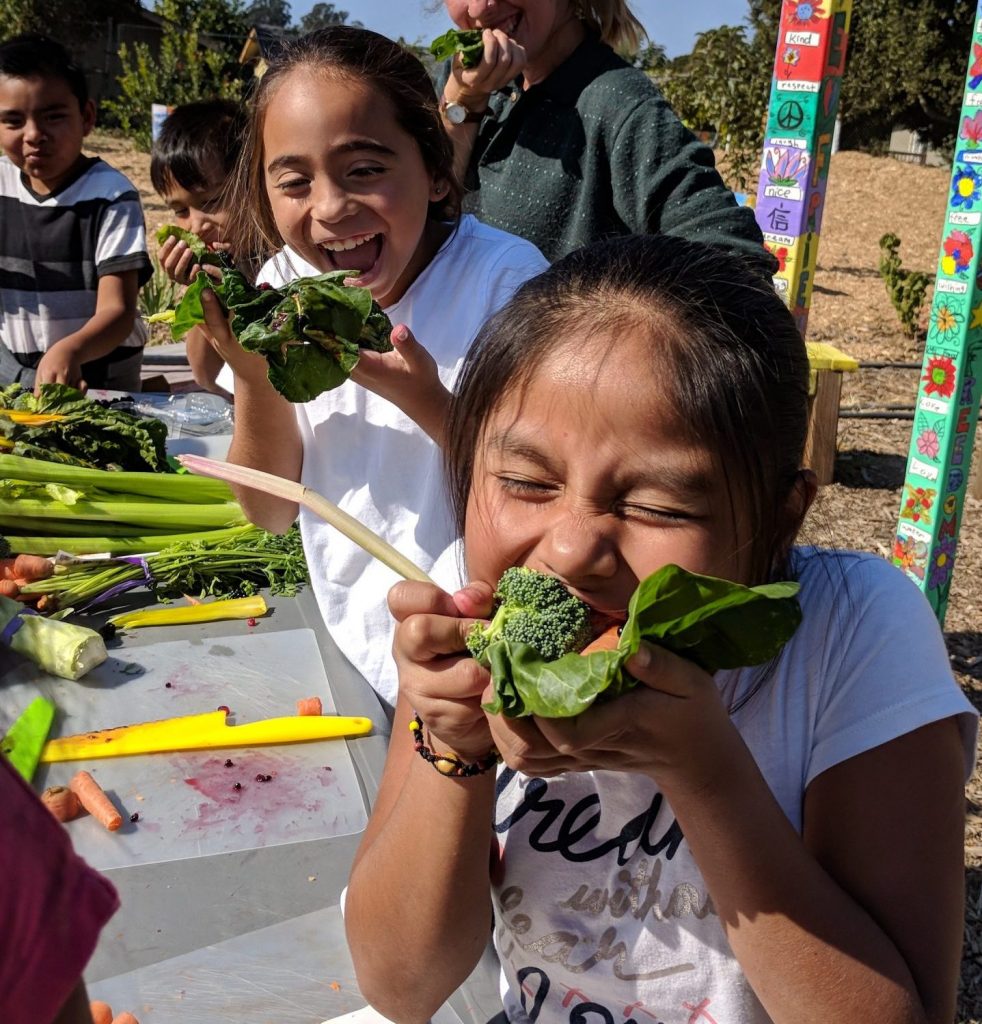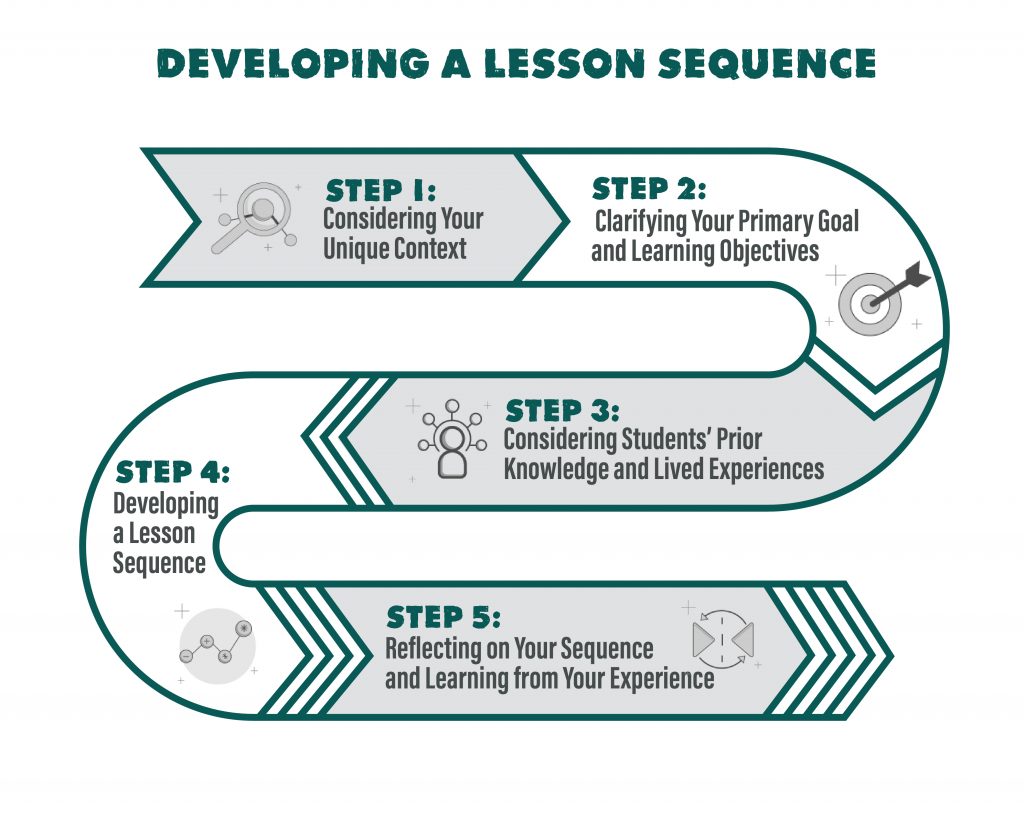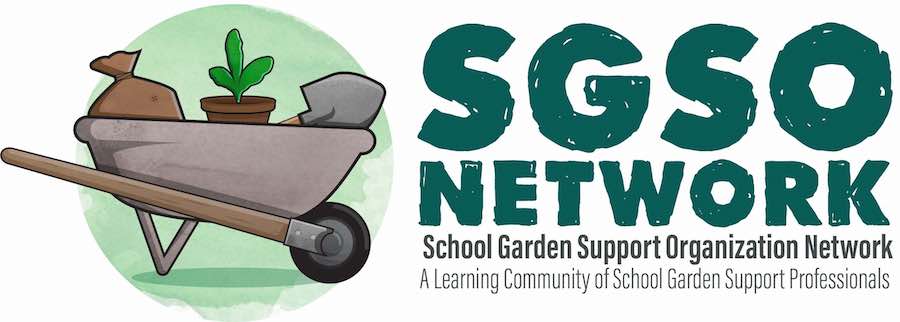table of contents
The resources on this page have been shared by SGSO Network members. If you have relevant resources to add related to finding & improving garden lessons or lesson sequencing, please share them via this form.

The resources on this page have been shared by SGSO Network members. If you have relevant resources to add related to finding & improving garden lessons or lesson sequencing, please share them via this form.


Culturally Responsive-Sustaining Education
Culturally Responsive-Sustaining Education is an approach that responds to students’ different cultural experiences and lifts up their unique voices and perspectives. The key idea in CRSE is a cultural view of learning and human development in which multiple forms of diversity (e.g., race, social class, gender, language, sexual orientation, nationality, religion, and ability) are recognized, understood, and regarded as indispensable sources of knowledge for rigorous teaching and learning. Here is a Culturally Responsive-Sustaining Education Webinar by Denita White, Manager of Equity Content for Tulsa Public Schools, and here is a tool from FoodCorps highlighting opportunities to apply CRSE to food education.
Social and Emotional Learning (SEL)
Social Emotional Learning (SEL) is the process through which children and adults acquire and effectively apply the knowledge, attitudes, and skills necessary to understand and manage emotions, set and achieve positive goals, feel and show empathy for others, establish and maintain positive relationships, and make responsible decisions. (CASEL) Here is a tool that describes SEL through a developmental lens (PreK-12), and here is the Abolitionist Teaching Network’s Guide for Racial Justice and Abolitionist Social and Emotional Learning.
Meeting the Needs of Schools
Garden programs are the most resilient when they are deeply integrated into the school culture, rather than being stand-alone programs. Toward this end, the most well integrated lesson sequences often:
Align with national, state, and/or district standards and pacing guides (see definitions below)
Are developed by, or in collaboration with, classroom teachers, district-level curriculum specialists and/or school administrators to ensure alignment with the schools’ goals
Adaptability: Culture, Context, Place
Every school, classroom, and community is different. Growing seasons, gardening and culinary traditions, and the life experiences of students vary significantly from place to place. Take this into account as you develop and sequence garden lessons. Here are tips from FoodCorps for adapting lessons.
An activity can be anything people do. A lesson is an instructional activity intentionally designed to support students in achieving a learning objective. For example, “composting” is an activity. A composting lesson, on the other hand, might involve inspiring curiosity about decomposition; composting with students; exploring the decomposers in the pile; discussing the role of decomposers in the environment; and then having students demonstrate their learning about decomposition by creating a labeled diagram showing the process.
Lesson sequencing is the systematic process of organizing several lesson plans which will be taught consecutively, focused on one topic of study. The practice of purposeful lesson sequencing is to create a coherent continuum of learning which builds upon the previously taught lesson while maximizing optimal learning outcomes. The resulting lessons sequences are also known as units.
Every public school is guided by a set of learning standards. Standards provide guidance about what students should know and be able to do by certain grades, and are used to guide the work of teachers and administrators. Reviewing these standards is a good starting point for understanding how garden-based lessons link to school curricula, which can help make the case for integrating lessons into broader classroom learning. Summarized from the FoodCorps Program Guide and the Shelburne Farms “Connecting Food, Farm and Nutrition Education to School Curricula” handout.
The Common Core State Standards (CCSS) are English Language Arts and Math Standards that most, but not all, states have adopted. Here is a map to the states that have adopted the CCSS.
The Next Generation Science Standards (NGSS) are K–12 science content standards that eighteen states have adopted. They emphasize ecological literacy and hands-on learning goals that closely align with garden-based learning. Many states have adopted state science standards that are similar to the NGSS. This paper categorizes and describes some of the common ways those developing and marketing science instructional materials are making connections to the NGSS.
Some states have adopted the Common Core English Language Arts and Math and Next Generation Science standards described above, and other states have opted for their own standards. You can find the standards used in your state by Googling: “Texas (or fill in your state) Curriculum Standards.” Here is an example of Farm to School Connections with the Massachusetts Curriculum Framework from Sustainable Nantucket.
Life Lab has a short list of Common Core English Language Arts and Next Generation Science Standards that are Frequently Reinforced in Garden and Cooking Education.
District Pacing Guides are created by school district leaders to help teachers stay on track and to ensure curricular continuity across schools in the district. Some pacing guides specify the number of days, class periods, or even minutes that teachers should devote to each topic. Here is an example At-a-Glance District Pacing Guide from Atlanta Public Schools.

There are many layers of “context” to consider before you begin your sequence. This includes the context of your program, the community the program is in, understanding the identities of your students, and how your own personal identity impacts and informs the sequence you are developing. Reflect on where you are, who you are working with, and how much time you have together as a means of shaping the overall flow of your lesson sequence. Start your planning at the macro scale by considering the following context questions.
Is this for an entire school year? A week? A specific season? Once a month for multiple months? Spanning multiple grades, like K-5? (Click on the embedded links to see example sequences for different timeframes).
What’s happening in the garden during this time? How might your teaching align with or explore phenomena occurring in a specific growing season in your particular garden? Are there school traditions, holidays, celebrations or themes of the class, school or district with which you hope to align? Food Corps has a guide for Customizing Lessons to Climate, Culture, and Students’ Needs.
How can you meet the needs of all learners at different ages and stages? Food Corps has a guide to Meeting the Needs of All Learners.
Every school, student and community is unique. Before beginning this work, identify your personal reasons for doing it. What assumptions or perspectives might you bring? Education Outside Getting to Know Yourself and Your Community- Identity Mapping, Fitting-in vs. Belonging, Asset Mapping
What perspectives might your students bring? See This handout on Customizing Lessons to Climate, Culture and Student Needs. How might the learning be informed by these cultures, prior student experiences, and community context?
Some questions to consider:
Does this sequence allow students to make connections between the content they are learning and themselves, their families, their community, the nation, or the world?
Who is represented in the curriculum? Who isn’t? Are groups being tokenized?
What are the staple foods of the culture in the community?
What types of foods are celebrated and grown as a source of pride?
How do cultural beliefs or traditions about gardening, health and well-being show up in this community? See tips for engaging families here. and critical questions for equitable and inclusive curriculum here.
What can your students teach you about growing food? What new foods or gardening techniques can you consider when developing this sequence?
Does the sequence include opportunities for student collaboration, sharing oral traditions, and deepening relationships? Examples lessons include: Food Memories (Edible Schoolyard Project), Food Memory Tourists, Our Food Traditions (FoodCorps) and When I Was
Little (Life Lab)
“Backward Design“is essentially a curriculum planning process that begins with establishing clear learning goals (with a focus on in-depth understanding) and then works backward to determine how to get students there. The three stages of Backward Design are:
Identify desired learning goals and outcomes. What will students be able to know and do as a consequence of your class or curriculum?
Determine how students will demonstrate what they know and can do.
Plan instructional strategies, resources, and learning experiences that best help students reach your learning goals and outcomes.
Identify the big ideas or skills you’re hoping students will come away with at the end of the lesson.
Example Big Ideas that Might Drive a Lesson Sequence:
Big Ideas of Farm to School – These Big Ideas include “Community,” “Cycles,” “Systems,” “Change and Adaptation,” “Interdependence,” “Limits,” and “Long Term Effects.” More about using “Big Ideas’ here.
NGSS Disciplinary Core Idea Progression – This chart shows all of the K-12 Disciplinary Core Ideas in NGSS, and identifies what they look like in different grade bands.
Overview of FoodCorps Lesson Themes – In this sequence themes include : “Living Up To Our Full Potential,” “Making Healthy Food Choices,” “Growing and Accessing Healthy Food,” “Preparing Healthy Food,” and “Connecting to Food, Culture and Community.” Then specific lessons are grouped under each theme and each lesson has its own Essential Questions and Learning Objective.
Examples of Garden or Kitchen Skills that Might Drive a Lesson Sequence:
Example of Garden Skills: Sprout Scouts Essential Skills FoodCorps
Example of Kitchen Skills: Edible Schoolyard 6th Grade Scope and Sequence
Identify what students will be able to do by the end of lesson sequence in order to demonstrate their mastery of the big idea or skill.
Goals, Objectives and Outcomes, SUNY Cortland
Writing Effective Learning Objectives, Presentation by Jenna Mobley
Begin every lesson sequence with an opportunity for students to share their own knowledge and lived experiences as they relate to the learning theme. This makes the lesson sequence relevant to students, and also helps the educator know what students are bringing to the table in terms of key understandings, misconceptions, and lived experiences that may inform their learning on the topic. This summary of research BEETLES Project – Research-Based Information About Student Learning explains why this is essential given what we know about how people learn.
What do students already know related to this unit/learning objective?
What skills do students bring that support this unit/earning objective?
“I Notice, I Wonder, It Reminds Me Of …” Activity from the BEETLES Project – Get kids looking at things and discussing those prompts
Think-Pair-Share on a Relevant Experience: When introducing something that might be new to students, start by posign a question that is related but relevant to students. For example, in Life Lab’s 2nd Grade Lesson, Seed Ya Later, before talking about how seeds travel, educators ask students about ways people travel. Then the students think about the question, then pair with a person next to them to discuss, and finally, share a few ideas out to the whole class.
Page Keeley’s Science Probes for Uncovering Students’ Ideas in Science – These are questions that help educators uncover students’ conceptions and misconceptions about big scientific concepts.
Once you know what new knowledge and skills students will need to construct, you can begin to break that down into lesson-sized “chunks,” circling back with each lesson to the overarching learning objective for the lesson sequence. Here is a concrete example explaining skills that students might need to know to meet a final objective:
Learning Objective: Students will be able to compare at least two designs for a composter to determine which is most likely to encourage decomposition of materials.
For students to be able to do meet this final objective, they will need to know:
1) Different design types of composters
2) The best environmental conditions for decomposition
3) Criterion for comparison, etc.
Additionally, if they have never been in the garden, they will need to know:
–the rules of the garden
–how to handle relevant tools
–how to treat creatures in the garden (such as worms)
Each of those concepts or skills might translate into a lesson, or a part of a lesson, that you can then sequence to create your coherent lesson sequence. Considering your timeframe, season, etc, you can begin to build out your plan for which lesson will happen first, next, etc. to build toward the desired outcome.
How do you wrap up and know that you are done? How do you check in on student progress while you’re teaching? Reflect on your progress? How do you adapt your sequences as needed, ideally in collaboration with co-workers, teachers and stakeholders?
The following lesson sequence samples have been shared by many different organizations. See a folder that includes the below and more in this folder of lesson sequencing examples. If you would like to add resources from your organization, we welcome you to do so via this form!
While these are sorted by “primary” organizational category, there are certainly overlaps and intersections, many sequences have been arranged to support multiple progressions in different categories. Often it makes sense to use many of these criteria. For example, a season-driven sequence may also be based on unit themes at the school level.
Depending on the length of your unit, the season/weather may affect when you do particular lessons. If you are doing a year-long plant life cycle lessons and using sunflowers as your example, fall may be when you observe a mature plant, harvest the seeds. WInter might be for seed exploration and reading books on the needs of a plant inside and spring might be for planting.
The following sequences have been organized to align with seasonally-significant phenomena or garden practices
Global Gardens Curriculum Roadmap
Calaveras Unified Scope and Sequence
Walla Walla Public Schools – 3rd Grade Lessons
These sequences build student understanding of specific themes defined by the SGSOs:
FoodCorps Lessons Progression Chart
Hawaii SGN: Scope and Sequence
These sequences build student understanding of specific themes defined by Curriculum Standards:
These sequences help students develop specific skills over time
Edible Schoolyard Berkeley’s 6th Grade Kitchen Scope and Sequence
The following is a list of mostly free online lesson resources. It include lesson databases as well as activity guide downloads.
When designing a lesson, it is important to consider the format and flow of the lesson. Every lesson needs an introduction, an instructional component, a student active learning component, and a reflection. Below are structures you can use to determine the flow of a new lesson or strengthen an existing lesson.
The 5 E’s are a proven strategy for creating and structuring hands on and engaging lessons for students. The 5 E’s stand for Engage, Explore, Explain, Elaborate, and Evaluate. This tool can be used to create an original lesson, or reformat and strengthen an existing lesson.
Provides specific and detailed descriptions of each 5E component and includes teacher and student actions.
Brief overview of each 5E component, including helpful tips and actions for each.
San Diego County Office of Education 5 E Model
Includes different examples of what each of the 5Es looks like for both students and teachers.
Example 5E’s Lessons:
FoodCorps intentionally plans out each of their lessons using the 5Es structure. This webpage includes links to all of their lessons by themes and grade level progression. Here is a link to a specific 4th grade lesson called “Get to Know a Crop.”
Life Lab Next Generation Science in the Garden Lessons
Life Lab has NGSS-aligned units for grades K-2. Each unit has one free, downloadable lesson, and all of the lessons follow the 5E format. Here are some sample lessons that follow the 5E format.
This is another lesson structure you can implement with students. The lesson flow takes you through the steps of awakening enthusiasm, focusing attention, offering direct experience, and sharing inspiration.
BEETLES Guide to the Learning Cycle
Evidence-based background for educators on how learning takes place and how to use this to inform how to structure classes, lead discussions & conduct experiments.
Once you have chosen a lesson topic, the lesson will need to be formatted in a way that is easy to follow. Below are examples of lesson plan templates that incorporate the 5 E’s strategy. In addition there are exemplar lessons from FoodCorps and Life Lab utilizing the 5 E’s strategy.
SEI Lesson Planning Template (created in collaboration with STEM4Real)
Includes specific space for educators to plan out how the 5Es will appear throughout the lesson. Includes space for both teacher action and student action.
As educators we all know that how you teach a lesson is just as important as the lesson content. Below are strategies for classroom management and engagement of all students including multiple modalities, how to break down tasks, and questioning techniques.
Food Corps: Working and Learning in the Garden with Students Classroom management and teaching habits: the Four P’s
(personal relationships, perceptions, parameter, participation)
Montezuma School to Farm Project: “The Basics”: Tips for Opening and Closing Circles, and facilitating garden chore working groups from Montezuma School to Farm Project in Mancos, Colorado
Teaching with multiple modalities means that an educator utilizes different learning modes throughout a lesson to enhance engagement. These learning modes are based on multiple intelligences including kinesthetic, visual, verbal, logical, interpersonal, intrapersonal, and musical. Below are resources to familiarize yourself with multiple modalities and examples of strong lessons incorporating multiple modalities.
Food Corps: Meeting the Needs of All Learners
FoodCorps provides an overview of how to use multiple modalities to maintain student engagement.
Oxbow Farm & Conservation Center: Working with Children
Oxbow slideshow introducing new educators to the basics of experiential environmental education and how it mirrors childhood learning and development
Examples of Multimodal Lessons
A FoodCorps lesson where all learning modalities are engaged through a simple and quick tasting.
When teaching a lesson, certain tasks may have multiple steps and how-tos that students need to remember. Garden maintenance tasks can become a safety issue if students are confused and utilizing tools. These tasks should be broken down into simple steps that students can easily remember and accomplish. Below are resources for how to break down tasks for all ages of learners in the garden.
Montezuma Farm to School Project shares how to ensure that students regularly
engage in age-appropriate, authentic and essential garden tasks.
Rooted: Container Herb Garden for Young Children
Rooted includes examples of how to engage very young learners in the garden. This includes examples of age appropriate and engaging tasks for younger learners.
Open ended questions are another way to enhance lessons and provide time for rigorous learning, student input, and foster student engagement. Garden lessons are naturally hands-on and experiential. Educators can enhance student engagement by structuring their classes to include experiential learning and understanding how students best learn. Below are resources on question strategies, student learning cycles, and strong hands-on teaching strategies.
BEETLES Instructional Session on Questioning Strategies
An instructional session with handouts, slide decks, and more, to teach instructors about crafting broad questions that invite diverse responses
Embedding culturally responsive practices into lessons is deeply beneficial for all children because they connect with the cultural perspectives, experiences, and perspectives of students. This section includes information on what culturally responsive lessons can look like in the garden, ways to incorporate CRT engagement strategies, CRT literature to incorporate, how to evaluate lessons for CRT effectiveness, and how to grow as an educator in sustaining culturally responsive education in your everyday practice.
Culturally Responsive-Sustaining Education Webinar by
Denita White, Manager of Equity Content for Tulsa Public Schools,
Presented at the 2021 SGSO Leadership Institute
FoodCorps- Culturally Responsive Teaching (CRT)
Food Corps overviews CRT theory and gives tools for Implementing strategies in your classroom.
Soul Fire Farm’s Activity List
Soul Fire Farm includes curriculum on Food Justice, Mama Earth, and
Community Organizing. Educators should reference their integrity guidelines
before incorporating these resources.
Collaboration between Hopi farmers and the Crow Canyon
Archaeological Center. Includes lessons incorporating ancient Native farming practices.
Youth Outside Critical Questions for Equitable and Inclusive Curriculum
Rubric for designing and assessing curriculum through a culturally responsive lens.
Learning for Justice: Social Justice Standards
Incorporate Teaching for Justice’s Social Justice Standards in lessons.
These standards are organized by grade levels and incorporate anti-bias
scenarios and examples.
LAUSD- Protocol for Culturally Responsive Teaching and Increased Student Engagement
LAUSD guides educators on how to incorporate culturally responsive participation strategies to foster equity of voice.
City Blossoms Children’s Literature List
Educators should ask themselves, “Are there children’s books, written by Black, Indigenous, and People of Color activists, working toward collective liberation”, that can be highlighted or uplifted in your lessons? This City Blossoms guide provides Food and Culture books on page 18-19 and books on Real Life Heroes on page 23.
Conscious Kids includes book lists and examples of culturally relevant resources for educators.
Research: Who are the local Black, Indigenous, and People of Color activists, working toward collective liberation? Follow BIPOC individuals on platforms such as Instagram and learn about their work and experience. Rodale Institute provides a list of BIPOC environmentalists and farmers to watch.
Explore Soul Fire’s “Reparations Map for Black Indigenous Farmers.” Look at their list of “Efforts and Groups to Support.”
Check out examples of BIPOC Farms and Food Businesses in your community. Here is an example of resources compiled by Washington State University.
While you may not be able to translate all lesson dialogue, translating key terms, worksheets, signs, visuals, and instructions can provide emergent multilingual learners with access to content. Below are resources with strategies for supporting English learners as well as translated resources for students and families.
Life Lab’s Guide to Scaffolding Lessons for Emergent Multilingual Learners
Life Lab provides 10 Key Strategies for how to make lessons more accessible to English Learners. These strategies incorporate the 5 E’s lesson framework.
Teaching in Nature’s Classroom
Resource about principles of garden education available translated into Spanish.
Rooted
Rooted provides multiple translated resources about gardening with ECE learners translated into Spanish. These can be utilized with families and community members.
Wisconsin School Garden Network
This resource provides multiple translated resources for both families and students including a dictionary of garden terms and planting guide.
City Blossoms
Provides multiple translated lesson plans for educators and families.
Spanish Language Garden-Based Learning Resources
A comprehensive list (written in Spanish and English), curated by Life Lab.
The resources on this page have been shared by SGSO Network members, and collectively curated by participants in the 2021 National SGSO Leadership Institute, listed below. You can contribute your own resources to share with the SGSO Network.
2021 SGSO Leadership Institute contributors: Erica Curry – FoodCorps, Kristen Bailey – Global Gardens OKC, Deborah La Belle & Eddie Recinos – The Education Fund, Erica Krug – Rooted, Erin Bohm – Here To Be, George Spencer – SEI-CCEO, Shea Scribner – Oxbow Farm & Conservation Center, Calin Duke – Sustainable Nantucket, Whitney Cohen – Life Lab
